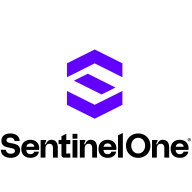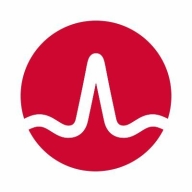


Symantec Cloud Workload Protection and Trend Vision One Cloud Security compete in cloud security. Symantec has the upper hand in pricing and support, while Trend Vision One stands out with its superior features.
Features: Symantec Cloud Workload Protection is distinguished by comprehensive threat detection, seamless integration, and user-friendly operation. Trend Vision One stands out with advanced analytics, automated response systems, and a focus on deep insights.
Room for Improvement: Symantec needs better reporting, enhanced scalability, and improved performance. Trend Vision One faces challenges with its initial setup complexity, ease of management, and user interface simplicity.
Ease of Deployment and Customer Service: Symantec excels in straightforward deployment and responsive customer service. Trend Vision One requires more configuration time initially, supported by robust ongoing assistance.
Pricing and ROI: Symantec offers competitive setup costs and strong ROI through integration with existing systems. Trend Vision One's higher costs are justified by its comprehensive feature set and effective security management.
| Product | Market Share (%) |
|---|---|
| SentinelOne Singularity Cloud Security | 3.6% |
| Trend Vision One - Cloud Security | 1.8% |
| Symantec Cloud Workload Protection | 0.2% |
| Other | 94.4% |



| Company Size | Count |
|---|---|
| Small Business | 47 |
| Midsize Enterprise | 20 |
| Large Enterprise | 52 |
| Company Size | Count |
|---|---|
| Small Business | 11 |
| Midsize Enterprise | 6 |
| Large Enterprise | 7 |
SentinelOne Singularity Cloud Security offers a streamlined approach to cloud security with intuitive operation and strong integration capabilities for heightened threat detection and remediation efficiency.
Singularity Cloud Security stands out for its real-time detection and response, effectively minimizing detection and remediation timelines. Its automated remediation integrates smoothly with third-party tools enhancing operational efficiency. The comprehensive console ensures visibility and support for forensic investigations. Seamless platform integration and robust support for innovation are notable advantages. Areas for development include improved search functionality, affordability, better firewall capabilities for remote users, stable agents, comprehensive reporting, and efficient third-party integrations. Clarity in the interface, responsive support, and real-time alerting need enhancement, with a call for more automation and customization. Better scalability and cost-effective integration without compromising capabilities are desired.
What are SentinelOne Singularity Cloud Security's standout features?SentinelOne Singularity Cloud Security is deployed in industries needing robust cloud security posture management, endpoint protection, and threat hunting. Utilized frequently across AWS and Azure, it assists in monitoring, threat detection, and maintaining compliance in diverse environments while providing real-time alerts and recommendations for proactive threat management.
Symantec Cloud Workload Protection automates security for public cloud workloads, enabling business agility, risk reduction, and cost savings for organizations, while easing DevOps and administrative burdens. Rapid discovery, visibility, and elastic protection of AWS and Azure workloads enable automated security policy enforcement to protect applications from unknown exploits.
Trend Vision One- Cloud Security Security provides comprehensive cloud security, threat protection, and compliance monitoring. Users commend its advanced features, ease of use, and strong performance in keeping digital assets safe. The platform improves efficiency and productivity for organizations while offering excellent customer support.
We monitor all Cloud Workload Protection Platforms (CWPP) reviews to prevent fraudulent reviews and keep review quality high. We do not post reviews by company employees or direct competitors. We validate each review for authenticity via cross-reference with LinkedIn, and personal follow-up with the reviewer when necessary.